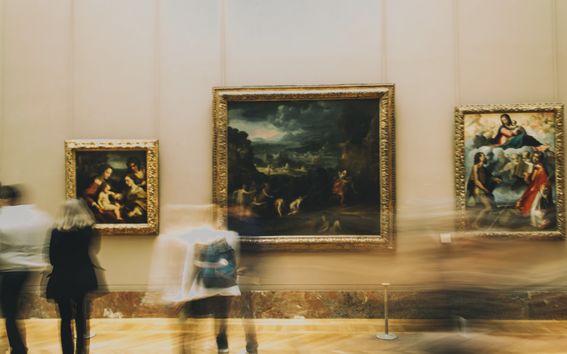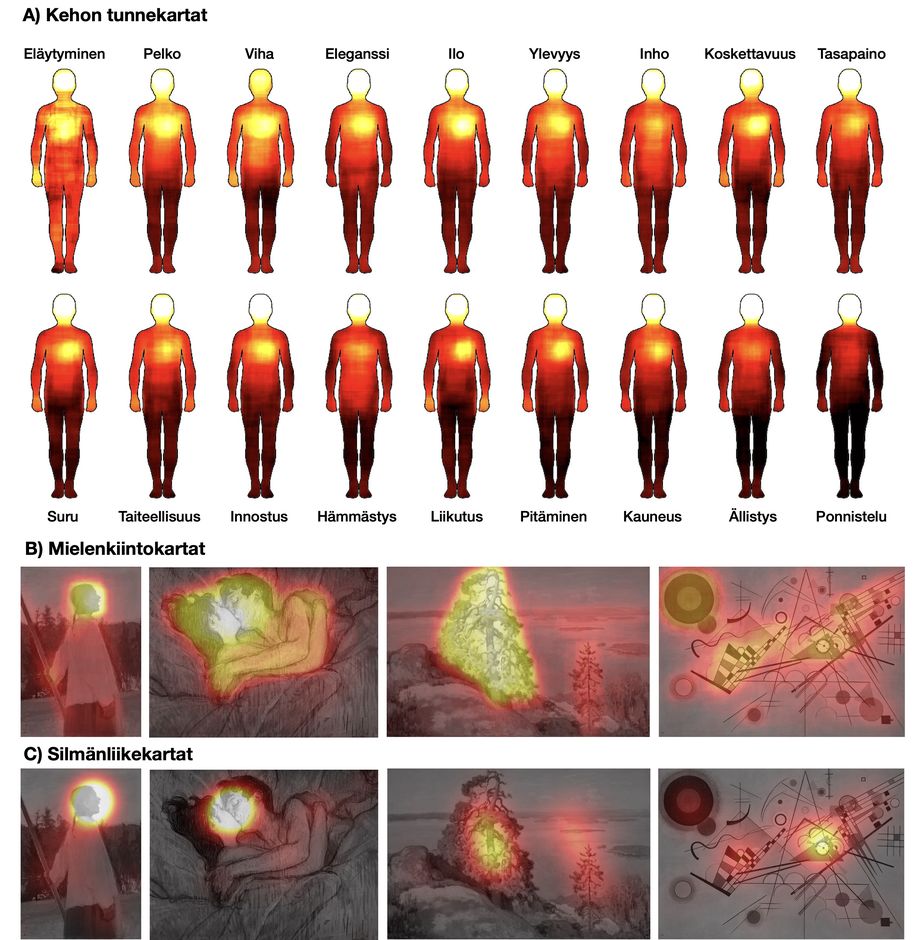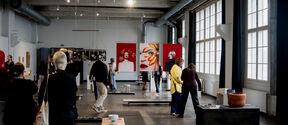Art evokes feelings in the body

People all around the world are drawn to creating and consuming art, and human emotions are often a central subject in visual artworks as well as in music and performance art. However, the mechanisms underlying the feelings that art evokes remain poorly characterised.
A new study reveals how viewing visual art affects our emotions. The research subjects viewed different kinds of artworks and described the feelings that the art stimulated in their bodies. The researchers recorded the subjects’ eye movement while they viewed the art. In addition, the subjects assessed what kind of emotions each piece of art evoked.
'Viewing the art evoked many different kinds of feelings and emotions in people. Even though many of the pieces handled sad or scary topics, the emotions that the people experienced were mainly positive. The bodily sensations evoked by art also contributed to the emotions: the stronger the body's reaction was to the artwork, the stronger were the emotions experienced by the subject,' says Professor Lauri Nummenmaa from the Turku PET Centre at the University of Turku, Finland.
'In the artworks, human figures were the most interesting subject and were looked at the most. People have a tendency to empathise with each other's emotions and this is probably also the case when we view human figures in art. The human emotions presented in art pieces can be absorbed by the viewer unnoticed, through so-called mirroring,' says Academician Riitta Hari from Aalto University.
Altogether 1,186 people from different countries participated in the study and they assessed the emotions evoked by over 300 artworks. The research was conducted with online surveys and eye movement recordings in the laboratory.
Academician Riitta HariIn the artworks, human figures were the most interesting subject and were looked at the most."
'Our results suggest that our bodies have a significant role in the aesthetic experience. Bodily sensations can draw people to art: art evokes feelings in the body, and such stimulation of the body’s pleasure centres feels pleasant to the viewer. This is why the emotions and bodily sensations evoked by art can be used, for example, in mental health rehabilitation and care,' Professor Nummenmaa recounts.

The research results were published in the Cognition & Emotion journal.
The earlier study of the Turku PET Centre and Aalto University on experiencing emotions in the body
Video of eye movements while viewing the artworks:
Read more news
Growing Materials, Growing Ideas: Inside the BioMaker Studio
At Aalto University’s BioMaker Studio, initiated by Ena Naito, students and researchers experiment with living materials, from algae to mycelium, creating an open, interdisciplinary space where design, biology, and collaboration grow together.
The year in Review: What happened in 2025?
A recap of the milestones of the Master in Contemporary Design in 2025
Your voice gives away valuable personal information, so how do you keep that data safe?
With speech technologies becoming increasingly common, researchers want to make sure we don’t give away more information than we mean to.






